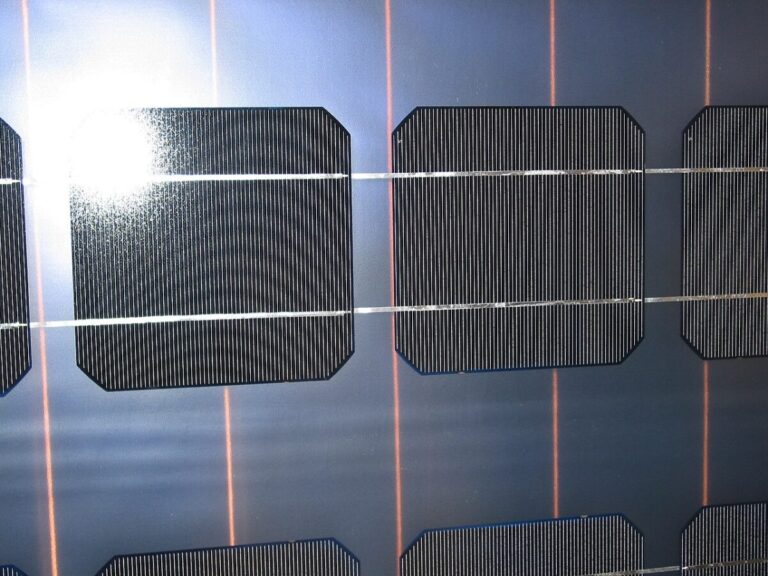An international team of researchers has proposed a series of processes to recover silicon and other metals from recycled solar cells. Their goal is to reuse the recovered silicon in the PV supply chain.
A European group of scientists has investigated the technical feasibility of physical recovery of the metal contacts from solar cells recovered from waste solar panels and the qualification of the recovered silicon for reuse in the PV supply chain.
“This reality urgently calls for the design and implementation of affordable, effective and large-scale strategies for recycling and reuse of all PV components, and in particular those that require the most energy in their production and are therefore responsible for the greatest impact on the environment. : the solar cells,” the scientists explained.
Demetallization
To recover metal contact, the group used potassium hydroxide (KOH)-ethanol-water solutions to optimize the demetallization process. It tested different configurations of the solution on old monocrystalline solar cells. The front contacts of the cells were made with silver screen printing paste, as were the rear contacts, although they also contained traces of other metals such as aluminum, iron or lead.
“The operating conditions for each experiment were as follows: immersion for 105 minutes in 250 ml of etching solution, with a solid/liquid ratio of 0.004 g/ml, magnetic stirring and a temperature ranging from 60 C to 70 C,” the scientists said. Pre- and post-treatments were performed to minimize the possible presence of impurities on the surface of the sample.
The demetallization experiments had three variables: different operating temperatures (60 C, 65 C, and 70 C), different KOH portions (10%, 15%, and 20%) and different ethanol rates (5%, 10%, and 15%). %). The process was carried out in a 250 ml high beaker, into which the cell fragments were introduced in a vertical position, held by plastic tweezers.
“From the design of the experiments, it can be concluded that temperature is the most influential parameter on the weight loss and demetallization rate, while the interaction between ethanol and temperature is the most influential factor on the lifetime of minority carriers,” they said. “Processing at a temperature of 60 C in a 10% KOH – 5% ethanol solution for 105 minutes appears to be the best option for recovering pure metals while retaining as much silicon as possible.”
Recrystallization
As for the process of recrystallizing the recovered silicon, the academic started with “cleaned fragments of old B-doped multicrystalline commercial wafers,” which were manufactured in the 2000s. They used a grower from Czochralski (Cz) to make a bar, which was then cut into 79 wafers. These underwent phosphorus diffusion gettering (PDG) processes to improve their transport properties.
“Following the successful growth and wafer slicing, a thorough optoelectronic characterization program was implemented,” the research group said. “It demonstrated the fulfillment of the basic requirements needed to make new solar cells, in terms of wafer resistance (about 1 Ω cm), oxygen content (about 1,018 cm3), mobility (about 1,000 cm2/V⋅s) and lifespan of carriers. (above the 100 μs threshold in all cases and reaching maximum values of 350 μs).”
The group used the recovered materials to fabricate phosphor/aluminum solar cells with a back surface (P/Al-BSF). The structure included evaporated metal contacts, with titanium/palladium/silver (Ti/Pd/Ag) for the front contact and Al for the rear. Finally, IV characteristics were obtained under illumination with one sun in four cells and compared with a reference.
“From our results, we conclude that the major device performance limitations observed in devices fabricated from recrystallized material and demetalized wafer fragments are not due to the material quality degradation that ultimately occurs during the recovery and use phases of the silicon substrates, but rather to pitfalls during the cell process. production,” the team concluded.
Its analysis was presented in the article “Validation of recycling processes for demetallization and recrystallization of silicon solar cells,” published in Solar energy. The research was conducted by scientists from Spain’s Complutense University of Madrid, the Polytechnic University of Madrid and Germany’s Leibniz Institute for Crystal Growth (IKZ).
This content is copyrighted and may not be reused. If you would like to collaborate with us and reuse some of our content, please contact: editors@pv-magazine.com.


